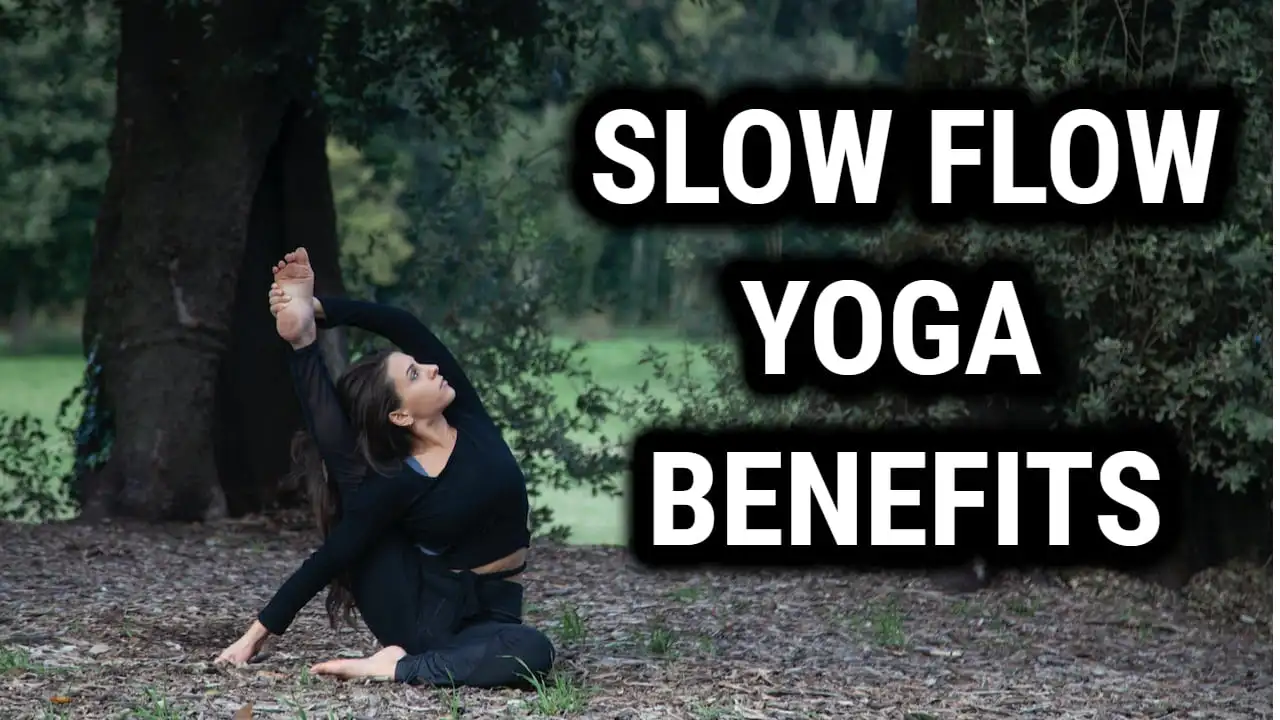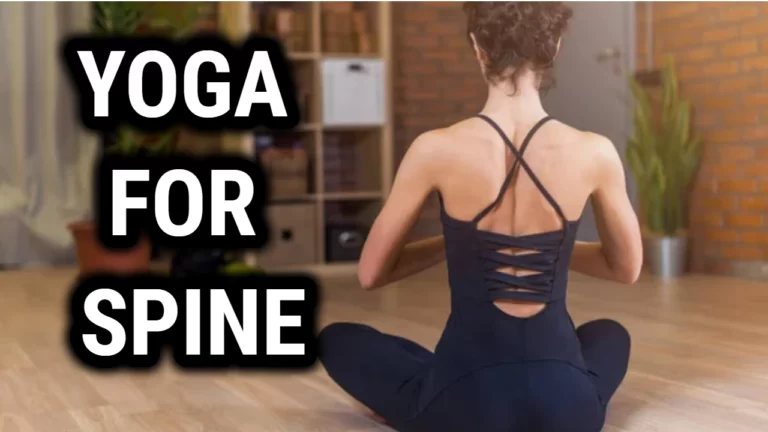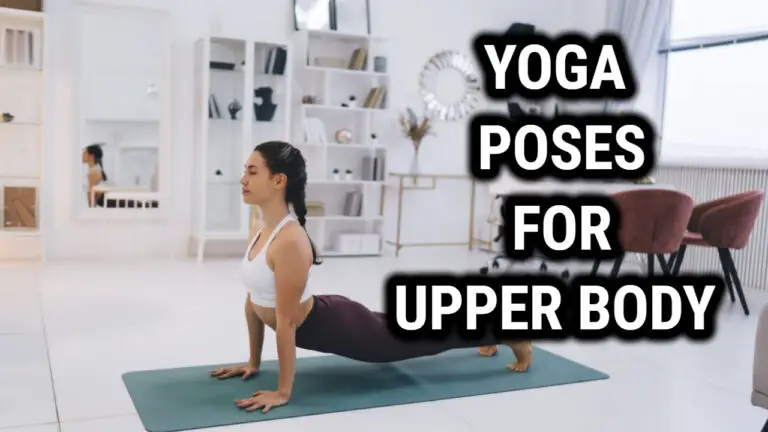Slow Flow Yoga Benefits That Will Change Your Life

What Is Slow Flow Yoga?
Slow flow yoga, also known as flow yoga, is a style of yoga that involves linking physical postures with breath. It is characterized by its fluid, dynamic movements and the focus on linking breath to movement. Slow flow yoga is typically a bit slower-paced than other styles of flow yoga, allowing for more time to focus on proper alignment and to hold postures for longer periods of time.
Physical Benefits
1. Improved Flexibility and Range of Motion:
Slow flow yoga can help to improve flexibility and range of motion by gradually stretching and lengthening the muscles through its slow, controlled movements. This can be especially beneficial for people who sit for long periods of time, as it can help to counteract the negative effects of sedentary lifestyles on the body.
2. Increased Strength and Muscle Tone:
The fluid movements and frequent transitions between postures in slow flow yoga require practitioners to engage and strengthen their muscles, helping to build strength and tone over time.
3. Improved Balance and Coordination:
The practice of slow flow yoga requires practitioners to be mindful of their body positioning and to make subtle adjustments in order to maintain balance in each posture. This can help to improve balance and coordination in everyday life.
4. Reduced Stress and Tension in the Body:
The focus on breath and movement in slow flow yoga can help to bring the mind and body into a state of relaxation, leading to reduced muscle tension and a greater sense of overall relaxation. This can be especially beneficial for people who experience high levels of stress in their daily lives.
Mental Benefits
5. Improved Focus and Concentration:
Slow flow yoga requires practitioners to focus on their breath and movements, which can help to improve focus and concentration. This focus can also extend beyond the practice of yoga, helping practitioners to be more present and focused in other areas of their lives.
6. Increased Relaxation and Stress Management:
The slow, controlled movements of slow flow yoga, combined with the focus on breath, can help to bring the mind and body into a state of relaxation. This can help to reduce stress and improve overall stress management.
7. Improved Sleep:
The relaxation and stress management benefits of slow flow yoga can also lead to improved sleep. By calming the mind and body, slow flow yoga can help practitioners fall asleep more easily and sleep more soundly.
8. Increased Self-Awareness and Mindfulness:
Slow flow yoga encourages practitioners to be present and mindful in the moment, helping to increase self-awareness and mindfulness. This heightened awareness can carry over into other areas of life, helping practitioners to be more mindful and present in their daily activities.
Emotional Benefits
9. Improved Mood and Overall Well-Being:
The physical and mental benefits of slow flow yoga can lead to improved mood and overall well-being. The relaxation and stress management benefits, in particular, can help to improve mood and promote feelings of happiness and contentment.
10. Increased Feelings of Calm and Relaxation:
The slow, controlled movements and focus on breath in slow flow yoga can help practitioners feel more calm and relaxed. This can be especially beneficial for people who experience anxiety or stress in their daily lives.
11. Enhanced Sense of Connection and Community:
Slow flow yoga is often practiced in a group setting, which can help practitioners feel a sense of connection and community. The supportive and non-competitive atmosphere of yoga classes can foster a sense of belonging and connection with others.
Respiratory Benefits
12. Improved Respiratory Function:
Slow flow yoga involves focusing on the breath, which can help to improve respiratory function. The deep, controlled breaths practiced in yoga can help to expand the lungs and increase oxygen intake.
13. Increased Lung Capacity:
The deep, controlled breaths of slow flow yoga can help to increase lung capacity over time. This can be especially beneficial for people who have low lung capacity or who experience shortness of breath.
14. Enhanced Breathing Control and Relaxation:
The focus on breath in slow flow yoga can help practitioners develop better control over their breath and use it as a tool for relaxation. The ability to control and regulate the breath can be especially helpful for people who experience anxiety or panic attacks.
Also Read: Benefits Of Outdoor Yoga
Stress Management Benefits
15. Decreased Levels of the Stress Hormone Cortisol:
The advantages of relaxation and stress reduction of slow flow yoga can lead to decreased levels of the stress hormone cortisol. Cortisol is a hormone produced by the body in response to stress, and high levels of cortisol can have negative effects on the body.
16. Increased Production of Feel-Good Hormones:
The relaxation and stress management benefits of slow flow yoga can also lead to an increase in the production of feel-good hormones like serotonin and dopamine. These hormones are associated with feelings of happiness and well-being.
17. Improved Ability to Cope with Stress and Difficult Emotions:
The focus on breath and mindfulness in slow flow yoga can help practitioners develop coping mechanisms for dealing with stress and difficult emotions. The ability to pause and take a few deep breaths can help to bring a sense of calm and perspective when faced with challenges.
Spiritual Benefits:
18. Enhanced Sense of Connection to One’s Inner Self and the World Around Them:
Slow flow with a focus on breath and mindfulness yoga can assist practitioners in their development.a deeper sense of connection to their inner selves and the world around them. This can foster a sense of peace and contentment.
19. Improved Sense of Peace and Contentment:
The relaxation and stress management benefits of slow flow yoga can also lead to an improved sense of peace and contentment. The practice can help practitioners to let go of stress and negative emotions and cultivate feelings of calm and serenity.
20. Increased Feelings of Gratitude and Compassion:
Slow flow yoga can also lead to increased feelings of gratitude and compassion towards oneself and others. Practicing yoga can help practitioners develop a greater sense of empathy and understanding for themselves and others.
FAQs About Slow Flow Yoga
Q. Is slow flow yoga suitable for beginners?
A. Yes, slow flow yoga can be a great option for beginners. The slower pace of the practice allows for more time to focus on proper alignment and to learn the various postures. It is also generally more low-impact than other styles of yoga, making it more accessible for people who are new to yoga or who have injuries or chronic pain.
Q. Do I need any special equipment to practice slow flow yoga?
A. Generally, all you need to practice slow flow yoga is a yoga mat and comfortable clothing. Some people may also choose to use props like blocks, straps, or blankets to assist with certain postures, but these are not necessary for all practices.
Q. How often should I practice slow flow yoga?
A. The frequency of slow flow yoga practice will depend on individual goals and preferences. Some people choose to practice every day, while others may practice a few times a week. It is generally recommended to practice slow flow yoga at least once a week to start seeing the benefits.
Q. Can slow flow yoga be modified for people with injuries or chronic pain?
A. Yes, slow flow yoga can generally be modified to suit a wide range of fitness levels and physical abilities.
Do Read: Spiritual Benefits Of Yoga
Conclusion
Slow flow yoga is a dynamic and fluid practice that offers numerous physical, mental, and emotional benefits. From improved flexibility and strength to increased relaxation and stress management, this practice has something to offer for people of all ages and fitness levels.
slow flow yoga also has the potential to enhance feelings of connection and community. The supportive and non-competitive atmosphere of yoga classes can foster a sense of belonging and connection with others, making it a great practice for overall well-being.






